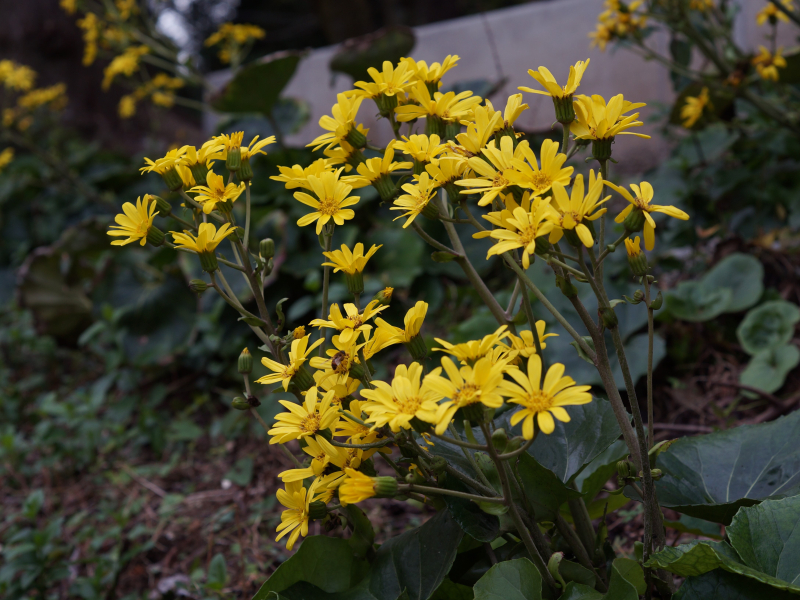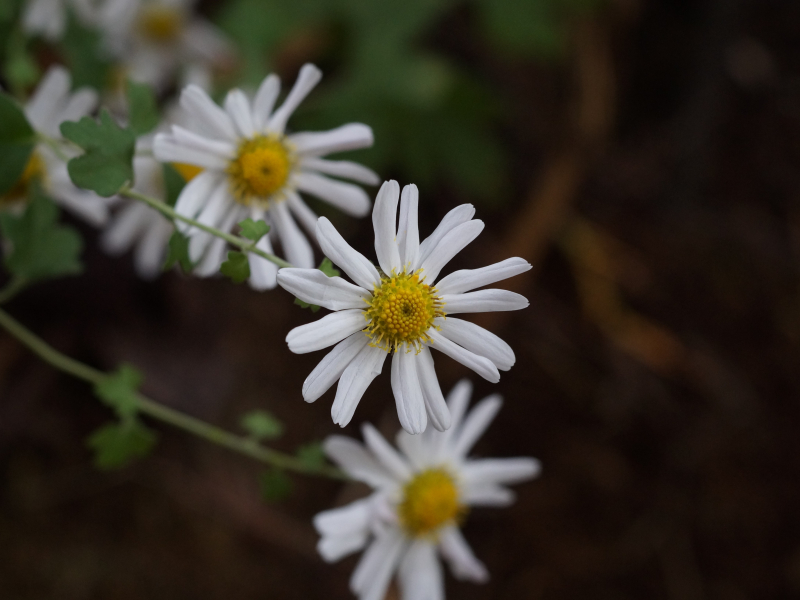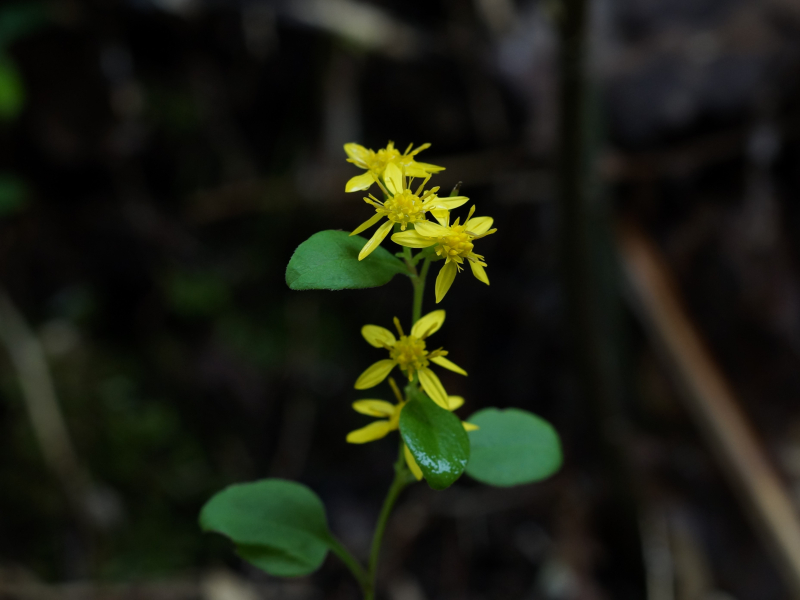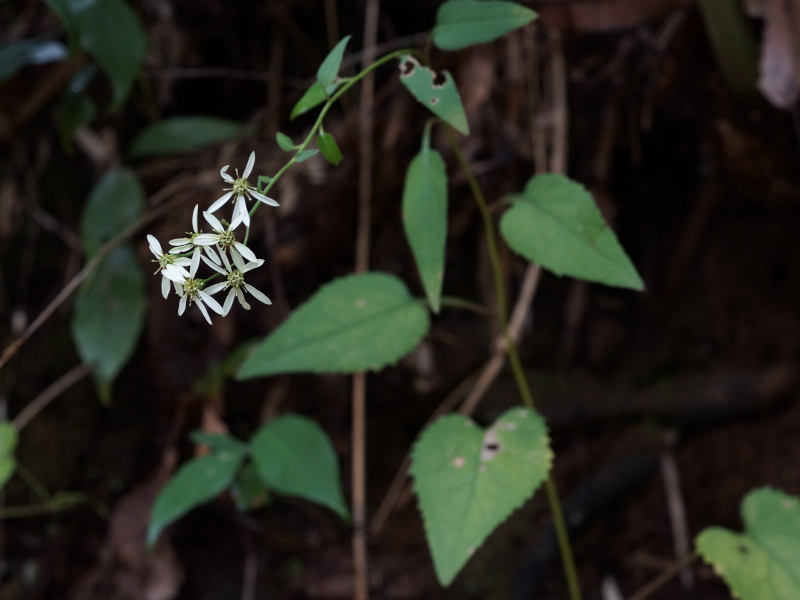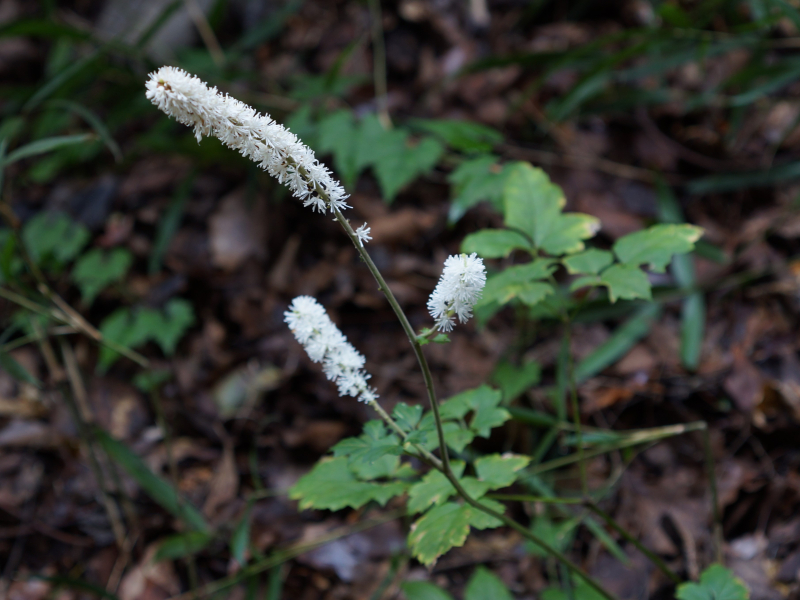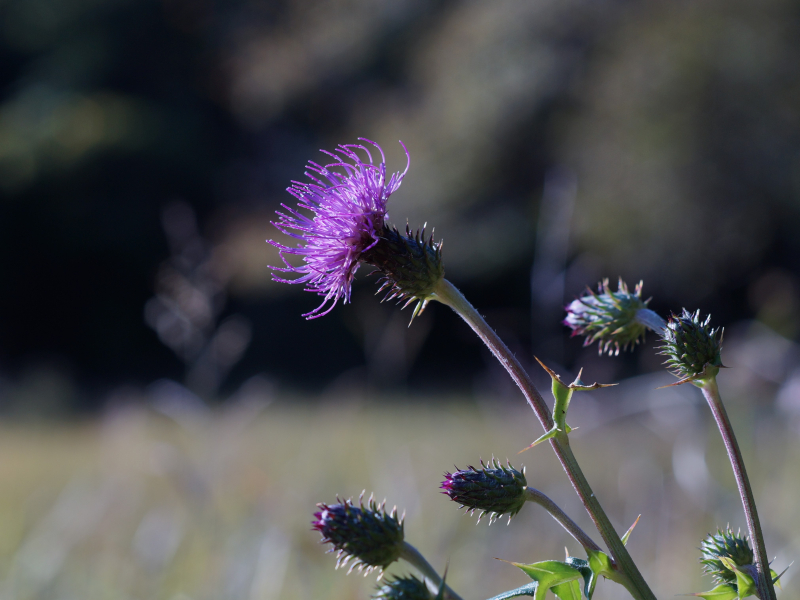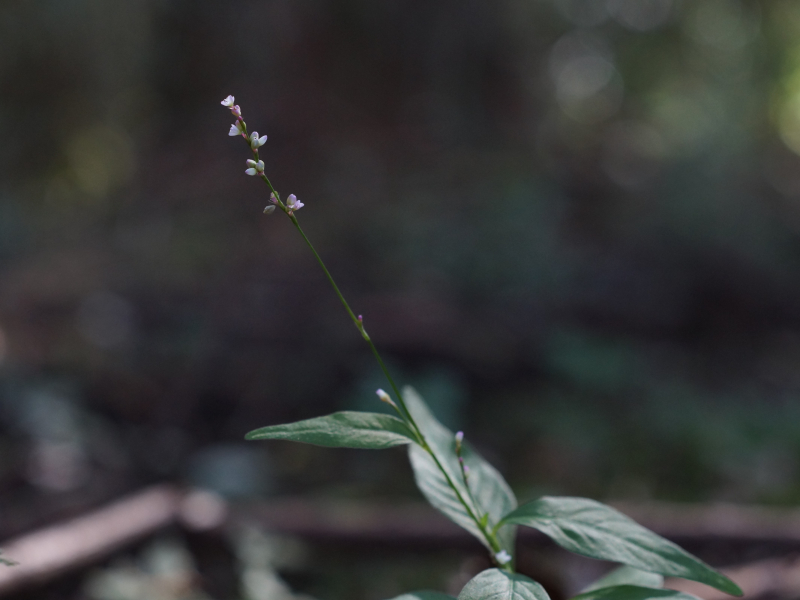フィールド日記
2023年11月
2023.11.28
ツワブキ
ツワブキが咲いています。海岸近くなどに自生するキク科の多年草です。古くから栽培されており、江戸時代から続く品種もあるようです。初冬に咲く花だけでなく、厚く光沢のある葉も鑑賞の対象とされています。
"Tsuwabuki (ツワブキ)i" plants are in bloom. They are perennial composite flowers that grow in coastal areas. They have been cultivated for a long time and some cultivars have lasted since the Edo era. People appreciate not only their flowers, which bloom in early winter, but also their thick shiny leaves.
2023.11.24
リュウノウギク
リュウノウギクが咲いています。野生のキクの仲間で、山地の斜面などによく見られます。和名は葉を揉むと、竜脳という香料のような香りがすることに由来します。
"Ryunou-Giku (リュウノウギク)" plants are in bloom. They are a wild Chrysanthemum and often seen on the slopes of mountains. The name comes from the fact that they smell like borneol, which is called "Ryunou" in Japanese, when you rub their leaves.
2023.11.21
アキノキリンソウ
アキノキリンソウが咲いています。ススキ野原や明るい林縁などに生えるキク科の多年草です。別名をアワダチソウといい、同じ仲間に北アメリカ原産のセイタカアワダチソウがありますが、本種は在来種です。
"Akino-Kirinsou (アキノキリンソウ)" plants are in bloom. They are perennial composite flowers that grow in the Japanese pampas grass field and on the sunny edges of forests. "Akino-Kirinsou" plants are a native plant, while they have another name "Awadachisou (アワダチソウ)" and have the relative plants called "Seitaka-Awadachisou (セイタカアワダチソウ), which comes from the North America.
2023.11.17
シラヤマギク
シラヤマギクが咲いています。和名は、山に生える白い菊という特徴がそのまま由来となっています。秋にはキャンパス内に数種類の野生の菊が見られますが、本種は下部の葉が三角形(心形)であること、花びらのように見える舌状花が少なくすき間があいていることなどの特徴があります。
"Shira-Yama-Giku (シラヤマギク)" plants are in bloom. The name comes from the fact that they are a white composite flower that grows in mountains. You can see several wild composite flowers on campus. This species has some characteristics: The plant has triangle-shaped leaves on the lower part of its stem and it has less ligulate flowers, which look like petals.
2023.11.14
サラシナショウマ
サラシナショウマが咲いています。和名は、若芽を食用にするときに、水にさらしてアクを抜くことに由来します。また、根を乾燥させたものを升麻(ショウマ)といい、生薬として利用されています。
"Sarashina-Shouma (サラシナショウマ)" plants are in bloom. The name comes from the fact that when we eat their young leaves, we put the leaves in the water to remove harshness. Their dried roots are used as herbal medicine.
2023.11.10
タイアザミ
タイアザミが咲いています。関東地方では最も身近なアザミの仲間です。和名の由来ははっきりしないようですが、葉にするどい刺があり、触ると「痛いアザミ」からタイアザミとなったという説があります。
"Tai-Azami (タイアザミ)" plants are in bloom. They are the most common plants in the Kanto region that belong to the "Azami" group. The origin of its name is not so clear, but some people say that the name comes from the fact that the plants have thorns on their leaves and they hurt you when you touch them.
2023.11.07
コシオガマ
コシオガマが咲いています。コシオガマはハマウツボ科の半寄生植物で、自ら光合成をする一方で、根で他の植物に取り付き、栄養を奪っています。同じハマウツボ科の寄生植物が世界中で農作物に大きな被害を及ぼしていることから、日本原産のコシオガマは寄生に関する研究のモデル植物として用いられています。
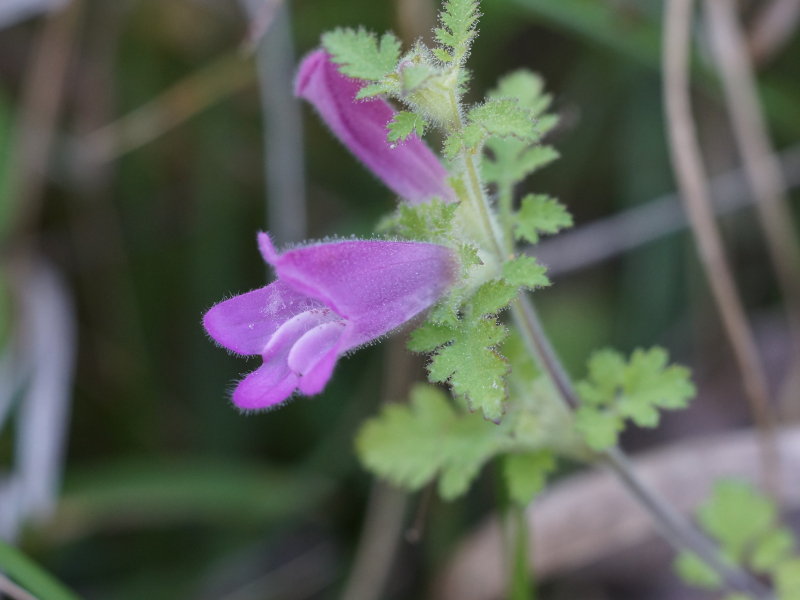
2023.11.03
ハナタデ
ハナタデが咲いています。近縁種に比べて小型で、花数が少ないのが特徴です。牧野富太郎博士によると、本種をハナタデと呼ぶのは間違いで、より花が密につく現在イヌタデと呼ばれている植物が、本来ハナタデと呼ばれるべき植物だそうです。そのため本種をヤブタデと呼ぶこともあります。
"Hana-Tade (ハナタデ)" plants are in bloom. They are smaller and bear less flowers compared to the relative species. According to Dr. Tomitaro Makino, it's wrong to call this species "Hana-Tade". Instead, what we now call "Inu-Tade (イヌタデ)", which are densely flowered plants, should be called "Hana-Tade". Therefore, "Hana-Tade" plants are also called "Yabu-Tade (ヤブタデ)".
- 1 / 1


